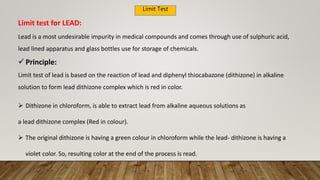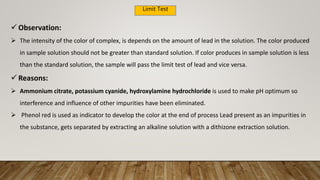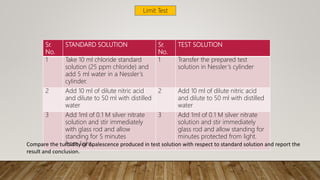The document discusses various limit tests designed to detect impurities in substances, focusing on tests for chloride, sulphate, iron, lead, arsenic, and heavy metals. Each test is based on specific chemical reactions and procedures to determine if the impurity levels exceed acceptable standards, often through comparative observations of color or turbidity. The document details the principles, procedures, observations, and reasons for each test, emphasizing the importance of maintaining precise conditions and using standard solutions for accurate results.






















![Limit Test
Substance + dil HCl H3AsO4
(contains Arsenic impurity) Arsenic acid
H3AsO4 + H2SnO2 H3AsO3 + H2SnO3
Arsenic acid Arsenious acid
H3AsO3 + 6[H] AsH3 + 3H2O
Arsenious acid nascent hydrogen Arsine gas
The depth of yellow stain on mercuric chloride paper will depend upon the quantity of
arsenic present in the sample.](https://image.slidesharecdn.com/limittest-210203100922/85/Limit-test-23-320.jpg)


















